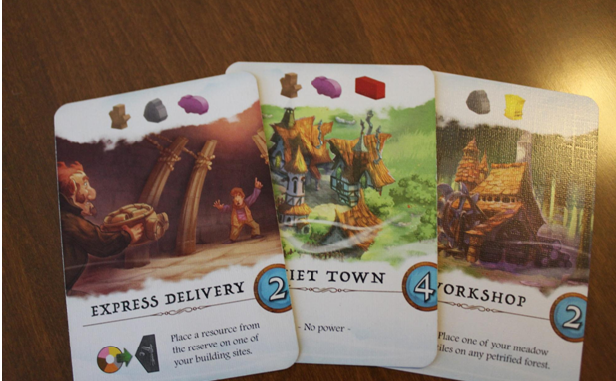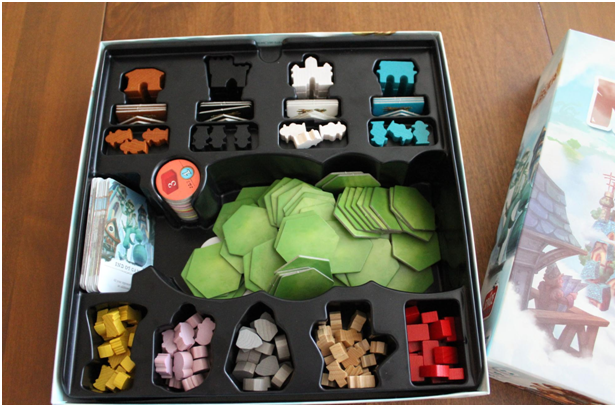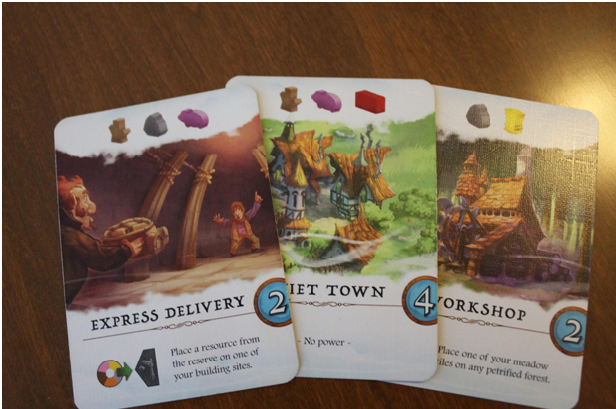
 I’m always on the lookout for games that have that classic gameplay feel and aesthetic. The games that are easy to pick up and play for that perfect 45-60 minute period. Those that have the almost-vintage hex tiles, vibrant wooden components, flashy art, all of which work together to draw the attention of whoever may pass by. When glancing at them, a double take is always in order, and it’s near impossible to pull away without taking a closer look first.
I’m always on the lookout for games that have that classic gameplay feel and aesthetic. The games that are easy to pick up and play for that perfect 45-60 minute period. Those that have the almost-vintage hex tiles, vibrant wooden components, flashy art, all of which work together to draw the attention of whoever may pass by. When glancing at them, a double take is always in order, and it’s near impossible to pull away without taking a closer look first.
Ensnaring me in this way and absolutely nailing the classic tabletop experience is Martin Wallace’s Via Nebula (Editor’s Note: Via Nebula appeared on our best board games of 2016 list). In this game, up to four players will compete, and grudgingly cooperate, to get rich in the valley of Nebula by exploring its mists, gathering abundant resources, and fulfilling various construction contracts.
It’s not only a great looking game, but Via Nebula also has a seemingly minor gameplay feature that plays out in a surprisingly big way. It stems from the fact that most of your actions will actually benefit other players. Can you choose your actions in a manner that benefits you more than your opponents? That is what becomes the overarching question.




Game Setup
Getting started is fairly straightforward. First, decide what side of the board you will be playing on. One is a bit more advanced than the other, but is nice for future replayability.
Each player is dealt two random private contract cards. Then the neutral contract cards are shuffled, and the first four revealed face up on their spaces.
Of the five special exploitation tokens, one is randomly removed from the game, then the rest are mixed in with the normal tokens. These all get placed randomly on each meadow space on the game board, then turned face up. The revealed special tokens will then get replaced with the shown resource type to help get the game started.
Finally, each player fills their guild board/playmat according to the icons and numbers listed. This will include the two craftsmen, three building sites, fives buildings, and four stacks meadow tiles. That’s it!




How to Play
The goal is simple, and that is to have the highest number of victory points at the end of the game.
6A player’s turn consists of taking exactly 2 actions, these include the following:
Place a Craftsman – The player may take one of his or her available craftsman onto a hex with an exploitation token. The token then gets added to the player’s score pile, and resources matching the token get placed onto the hex. These will now be available for everybody.
Place a Building Site – A building site is taken from the players pool and placed on a ruin space. Each ruin space can contain up to 2 building sites, and these may or may not belong to the same player.
Explore a Fog Space – A meadow tile from one of the player’s stacks may be used to cover up a fog space. This fog space must be adjacent to one of that player’s building sites or another empty meadow space. If the player has no more tiles, one may be taken from the game box.
Explore a Petrified Forest – This action is exactly the same as Explore Fog, except that it costs both of the player’s actions and covers up a Petrified Forest rather than a Fog space.
Transport a Resource to a Building Site – A resource may be taken from any space on the board that connects to one of the player’s building sites. The connecting path must be made up of empty meadow spaces only. If the space has resources on it, it is not considered empty.
Construct a Building – A contract card, either from the player’s hand or face-up on the game board, can be used to construct on a building site that meets the resource requirements on the card. The building site must have all the resources on it, and anything unused will go into the player’s storage area. This storage area can be considered a waste pile, as every resource here at the end of the game counts as one negative victory point.
These contracts are worth victory points, and may or may not have a special action specified. This action is optional, and can only be played immediately after fulfilling the contract.




Game End
The game ends when a player has completed their 5th and final building. That player wins the end-of-game card, essentially an extra victory point card, and every other player performs one last turn.
After all this, players place all building sites’ unspent resources into their storage areas. Points will then be totaled from the following sources:
- Contracts Completed
- Explorers Obtained (empty meadow tile stacks on the guild board)
- Exploitation Tokens
- Resources in Storage Areas (negative points)
The player with the highest total wins. In the case of a tie, the player with the least resources in their storage area wins.
Everybody gains, but can I gain more?
You can see how actions benefit more than just the person playing them. With almost every decision you’re faced with questions such as:
- When I explore this fog, am I opening up more viable paths for someone else?
- If I crack open this exploitation, will I even get to grab a brick next turn before their gone?
- Should I take the last wheat from the resource pile, opening up a path to someone else’s building site?
When watching people play for the first time, I’ll notice that this omnipresent meta-question brings forth a rather unique thought process. It’s almost chess-like. It’s not uncommon to see players alternate between nearly placing a meadow tile, but then stepping back to scan the board again. It often happens multiple times within a turn. And yet, it doesn’t occur in a monotonous way, but an intriguing one. Even the most beginner board game players are indirectly steered into second-level thinking, where they pay more attention to what other players might do and base their decisions off of predictions.
Putting together the consequences of this main mechanic along with the game’s classically-appealing visuals puts Via Nebula up on my recommendations list. Easy to understand, and memorable enough to quickly pick-up again once played, it’s the game I always end up bringing with me when spending the day with friends or family.

Be the first to comment